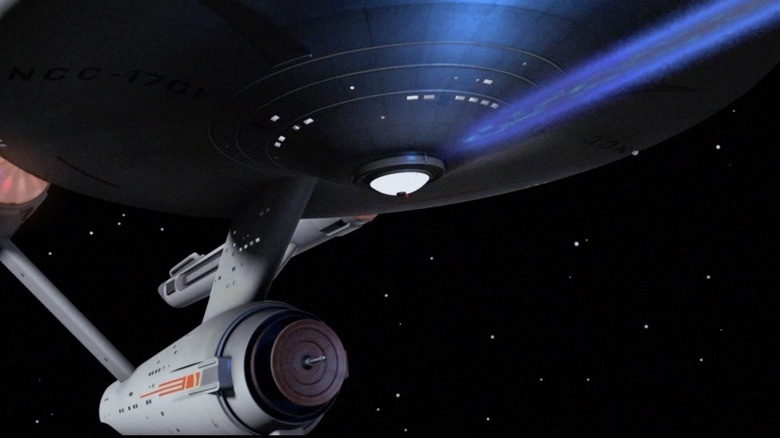We might obtain a fee on purchases made out of hyperlinks.
On “Star Trek,” when Starfleet officers had been about to embark on a harmful away mission, they might be instructed to set the gauges on their hand-held phasers. Most frequently, the phasers could be set to “stun,” though extra perilous missions would require them to set their phasers to “kill.” I’d advise not mixing of these settings. Of observe: there is no such thing as a “bone” setting. Later, on “Star Trek: The Subsequent Era,” officers would additionally discuss a “heavy stun” setting. The “Subsequent Era” phasers would later be revealed to have 16 distinct settings, with the bottom in a position to knock a humanoid unconscious for about 5 minutes, and the best setting — in response to Rick Sternbach’s and Michael Okuda’s invaluable “Star Trek: The Subsequent Era Technical Guide” — in a position to disintegrate roughly 650 cubic meters of rock per shot.
Commercial
Within the mythology of the franchise, the weapons are known as “phasers” as a result of they employed section modulators to manage the blast yield of a particle beam. Part modulators are a real-world expertise that was spruced as much as sound extra fantastical for “Star Trek.”
Because it so occurs, there was additionally a sensible purpose for naming the most common “Star Trek” weapons “phasers.” In spite of everything, collection creator Gene Roddenberry might have simply relied on a dependable sci-fi trope, “laser weapons,” as his weapons. Lasers had develop into well-known to sci-fi followers and to the scientific neighborhood on the whole, so if Roddenberry had mentioned that Starfleet crew members carried lasers, no viewers member could be misplaced. Because it seems, Roddenberry had certainly initially supposed to name Starfleet weapons “lasers,” a reality talked about in a 2016 “Star Trek” retrospective printed in Time Journal. Roddenberry modified the fictional tech to “phasers” when he realized that real-world laster expertise was extra superior than he had assumed.
Commercial
Lasers had been too twentieth century
It is price pausing to notice that “Star Trek” has usually striven to current its fantasy applied sciences as believable (or plausible-sounding), and invent sci-fi widgets that had been considerably grounded in real-world science. There aren’t any engines that may “warp” area and permit a craft to journey quicker than the pace of sunshine, in any case, however “Star Trek” not less than acknowledged that some type of means could be required to “skip round” the unusual legal guidelines of physics. These ideas would fall into sharper aid with “Star Trek: The Subsequent Era” in 1987.
Commercial
Roddenberry had written the unique “Star Trek” pilot episode to incorporate lasers as Starfleet’s foremost weapon. Whereas creating the collection within the mid-Sixties, although, he started to be taught of the present state of laser expertise, and located that hand-held laser weapons may solely be a couple of years away from sensible use. Seeing as “Star Trek” occurred within the twenty second century, he needed to replace its expertise to match. He determined to vary the identify of “lasers” to “phasers,” to make them sound extra fantastical. Roddenberry was quoted as saying “We did not need individuals saying to us three years from now, ʻOh, come on now, lasers cannot try this.'”
It might be like watching the 1995 film “Hackers” in 2025. Fashionable audiences probably have a hearty chuckle over how impressed the “Hackers” characters are with the ultra-primitive ’90s pc tech on show. Gene Roddenberry did not need his science fiction present to look dated, so he invented a fantasy expertise — phasers — on the spot. The “Star Trek” technical advisors then, because the present progressed, started to assign technical which means to the phrase. By the point ancillary “Star Trek” technical manuals had been printed, phasers made excellent sense.
Commercial




